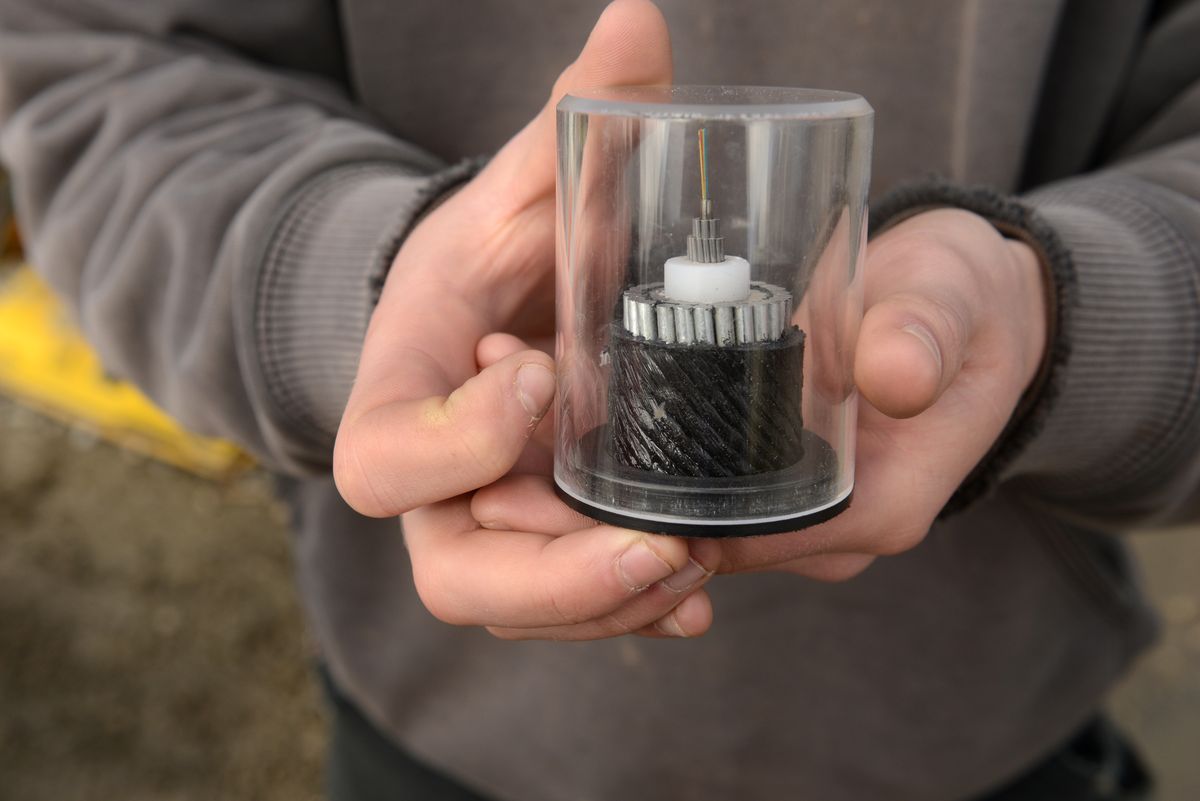Quintillion CEO: Fiber-based broadband set to go live in Alaska by end of the year
FAIRBANKS — An Arctic fiber-optic project that would speed up broadband service across northern Alaska is in its testing phase and scheduled to go live in December, the project CEO said on Monday.
Quintillion, the company in charge of the project, will spend the short summer construction season laying 45 more miles of fiber-optic cable from Oliktok Point on the North Slope to the rest of the undersea system off Alaska’s Arctic coast. The gap in the fiber system is the biggest impediment to making the system operational.

As of two weeks ago, the company began delivering broadband to commercial customers between the oil industry work camps at Prudhoe Bay and Fairbanks, Quintillion CEO Elizabeth Pierce told the Arctic Broadband Forum at the University of Alaska Fairbanks. Pierce was the keynote speaker.
[For rural Alaska broadband, the ‘middle mile’ is everything]
“We have already contracted with customers where we reduced their ‘backhaul’ costs by as much as 90 percent — on average around 50 percent — and that’s Day 1,” Pierce said. “And it only gets better from there because we have an almost infinite amount of capacity.”
“Backhaul” is an industry term used to describe the satellite, microwave and fiber-optic networks that act as a broadband highway system, connecting centralized telecom facilities in communities large and small to the internet.
In Alaska the high cost of building backhaul networks (also known as the “middle mile”) is part of why internet is so expensive both on and off the road system. Pierce declined to answer when asked specifically which customers had saved on backhaul costs and by how much in terms of dollar amounts because the contract agreements are confidential.
Alaska is just one part of the Quintillion project. If completed, the main line would connect London to Tokyo and would be the first fiber-optic cable to cross the Arctic.
[Telecoms plan big expansion of broadband in rural Alaska, with federal help]
The project is being financed primarily by Leonard Blavatnik, one of the world’s wealthiest individuals, through the Cooper Investment Fund. Alaska-based investors include subsidiaries of Native corporations Arctic Slope Regional Corp. and Calista Corp.
Aside from Prudhoe Bay, the communities of Nome, Kotzebue, Point Hope, Wainwright and Utqiagvik (Barrow) also happen to be along the path of the line. Those are the communities scheduled to see Quintillion service near the end of 2017.
The broadband providers serving those communities, including TelAlaska and OTZ, have said they expect to provide speedier internet with more data per dollar spent by consumers after Quintillion’s fiber goes live.
Pierce said the company is looking at expanding its network to other Alaska communities, both coastal and inland, but would not say which ones. The company is surveying half a dozen possible places to extend the cable and wants to avoid disappointing any community under consideration that is not ultimately chosen.
Last season, Quintillion focused on bringing the cable ashore to the five communities from Nome to Barrow, as well as Prudhoe Bay. The cable is in shallow waters on the continental shelf up to 330 feet deep and needs to be buried to protect against damage from ice scouring the ocean floor.
The French ship Ile de Batz has been contracted to plow the seabed and lay the cable in a trench up to 13 feet deep using equipment specially designed to penetrate the densely packed frozen clay of the seabed. Alcatel Submarine Networks, based in France, fabricated and is laying the fiber.